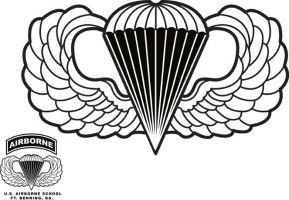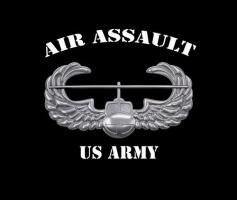Cadet Training Opportunities
This phase of training usually happens between a Cadet's sophomore and junior year. This training is designed to motivate and qualify Cadets for entry into the Senior ROTC program. This is accomplished through the Cadets learning the basics of the Army, completing obstacle courses, and taking on leadership roles among their peers. As BC progresses, Cadets’ leadership responsibilities grow as they lead peers through simulated combat scenarios using paintball guns in a field training exercise and on urban-based squad tactics missions. Lastly Cadets are taught to overcome their fears, whether it be from heights by tackling a 31 foot rappel tower, or water by conducting combat water survival training where they jump blindfolded off a 3-meter high dive while holding a rifle over their heads.
This training phase is after AC between a Cadet's junior and senior year. Cadets will further develop their skills as an Army soldier and a leader. The training includes the land navigation, basic rifle marksmanship, how to react to a CBRN (chemical, biological, radioactive, or nuclear) situation, first aid, as well as many others.
Cadet Troop Leader Training (CTLT)
This is an opportunity for Cadets to gain leadership experience by serving as a Platoon Leader for an active duty unit. Platoon Leader positions have a 3-4 week duration depending on the hosting unit and location. This program is exclusively designed for MS III Cadets before and after completion of the Cadet Leadership Course (CLC).
 Airborne
Airborne
This is a three-week course that teaches Soldiers the techniques involved in parachuting from airplanes and landing safely. The purpose of this training is to qualify the volunteer in the use of the parachute as a means of combat deployment and to develop leadership, self-confidence, and an aggressive spirit through mental and physical conditioning. The three training weeks are broken up into Ground Week, Tower Week, and Jump Week. Ground Week builds Airborne skills by giving Soldiers the skills to parachute jump and land safely. Tower Week involves Soldiers qualifying on the Swing Lander Trainer (SLT), master the mass exit procedures from the 34-foot tower, gain canopy confidence and learn how to manipulate the parachute from the 250-foot tower. Lastly is Jump Week where the Soldier will complete five jumps at 1,250 feet from a C-130 or C-17 aircraft and land safely.
Air Assault

Air Assault School is a 10-day course designed to prepare Soldiers for insertion, evacuation, and pathfinder missions that call for the use of multipurpose transportation and assault helicopters. Air Assault training focuses on the mastery of rappelling techniques and sling load procedures, skills that involve intense concentration and a commitment to safety and preparation. The 10 days are broken up into three, three day phases. The Day 0 candidates must prove they can be "Air Assault Students" by completing a obstacle course and a two-mile run. Day 1 candidates will perform a six-mile march. Then Combat Assault Phase begins candidates will learn aircraft safety and orientation, along with the principles of aero-medical evacuation, pathfinder operations, and combat assault operations, then they will be given a written and "hands on" test at the end. Next is Slingload Operations, this is where candidates will learn how to rig equipment ranging from 1,000 to 8,000 pounds onto rotary aircraft with a sling. The last phase is the Rappelling Phase, Soldiers will first be given instruction on ground and aircraft rappelling procedures. They will then be required to complete two repels from a 34-foot tower and two repels from a UH-60 Blackhawk, hovering at 70-90 feet.